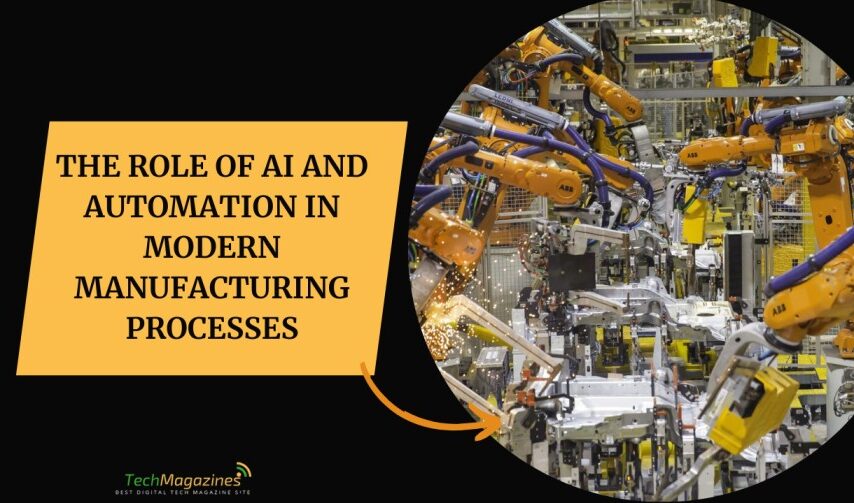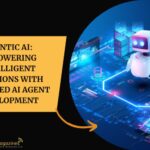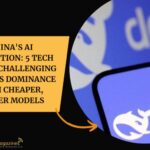As you navigate the rapidly evolving landscape of modern manufacturing, you’re likely encountering the transformative impact of artificial intelligence and automation. These technologies are revolutionizing production processes, enhancing efficiency, and reshaping the industry as you know it. From predictive maintenance to quality control, AI and automation streamline operations and drive unprecedented productivity. This article will explore these innovations’ multifaceted role in contemporary manufacturing. You’ll discover cutting-edge manufacturing AI solutions, improving product quality and creating new growth opportunities. Prepare to gain valuable insights into the future of manufacturing and how you can leverage these advancements in your operations.
The Rise of Automation in Modern Manufacturing
The manufacturing industry has witnessed a transformative shift in recent years as companies discover cutting-edge AI solutions to streamline their processes. This automation revolution reshapes how products are designed, produced, and delivered to consumers.
Driving Forces Behind Automation
The push towards automation in manufacturing stems from several key factors:
- Increased efficiency and productivity
- Cost reduction in the long term
- Improved product quality and consistency
- Enhanced workplace safety
These benefits have led manufacturers to invest heavily in robotics, artificial intelligence, and intelligent manufacturing systems.
Key Technologies Powering Automation
Manufacturing AI has become a cornerstone of modern production lines. Some of the most impactful technologies include:
- Collaborative robots (cobots): These machines work alongside human operators, enhancing productivity and safety.
- Machine learning algorithms: AI systems that predict maintenance needs and optimize production schedules.
- Internet of Things (IoT) devices: Sensors and connected devices that provide real-time data on equipment performance and product quality.
Impact on the Workforce
As automation continues to advance, the role of human workers in manufacturing is evolving. While some jobs may be replaced by machines, new opportunities are emerging:
- Upskilling: Workers are learning to operate and maintain advanced machinery.
- New job categories: Positions like robot programmers and data analysts are becoming essential in modern factories.
The future of manufacturing lies in the seamless integration of human expertise and artificial intelligence. By embracing these technologies, companies can stay competitive in an increasingly globalized market. As we continue to discover cutting-edge AI solutions, the industry is poised for even greater innovation and efficiency in the years to come.
Exploring the Power of Manufacturing AI Solutions
Revolutionizing Production Processes
Manufacturing AI solutions are transforming the industrial landscape, offering unprecedented levels of efficiency and precision. By integrating artificial intelligence into production lines, companies can optimize operations, reduce downtime, and enhance product quality. These cutting-edge technologies enable real-time decision-making, predictive maintenance, and adaptive manufacturing processes that respond to changing conditions on the factory floor.
Enhanced Quality Control and Defect Detection
One of the most significant advantages of manufacturing AI is its ability to detect defects and maintain quality standards with superhuman accuracy. Advanced machine vision systems, powered by deep learning algorithms, can inspect products at speeds and levels of detail impossible for human workers. This improves overall product quality and reduces waste and rework, leading to substantial cost savings.
Optimizing Supply Chains and Inventory Management
AI-driven solutions extend beyond the production line, revolutionizing supply chain management and inventory control. These systems can predict demand fluctuations, optimize inventory levels, and streamline logistics by analyzing vast amounts of data from multiple sources. Companies that discover cutting-edge AI solutions often have leaner, more responsive supply chains that can adapt quickly to market changes.
Empowering the Workforce
Contrary to common misconceptions, manufacturing AI doesn’t replace human workers but rather augments their capabilities. These technologies can handle repetitive, dangerous, or highly precise tasks, freeing employees to focus on more creative and strategic aspects of production. As a result, workers can develop new skills and take on more fulfilling organizational roles, increasing job satisfaction and productivity.
Implementing Cutting-Edge AI in Your Manufacturing Processes
Assess Your Current Infrastructure
Before implementing AI, evaluate your manufacturing setup. Identify areas where automation can have the most significant impact. Look for repetitive tasks, quality control checkpoints, and data-heavy processes that could benefit from AI-driven insights.
Choose the Right AI Solutions
Select AI technologies that align with your specific needs. Consider machine learning algorithms for predictive maintenance, computer vision for quality control, or natural language processing for inventory management. The key is to find solutions that address your unique challenges and complement your existing systems.
Implement Data Collection Systems
AI thrives on data. Install sensors and IoT devices throughout your manufacturing line to gather real-time information. This data will fuel your AI systems, enabling them to make accurate predictions and decisions. Ensure you have robust data storage and processing capabilities to handle the influx of information.
Train Your Workforce
As you discover cutting-edge manufacturing AI solutions, remember that your employees are crucial to successful implementation. Provide comprehensive training to help your team understand and work alongside AI systems. Foster a culture of continuous learning and adaptation to maximize the benefits of AI integration.
Start Small and Scale Up
Begin with pilot projects in specific areas of your manufacturing process. This approach allows you to test and refine AI implementations without disrupting your entire operation. As you see success and gain confidence, gradually expand AI integration across your facility.
Monitor and Optimize
Continuously evaluate the performance of your AI systems. Use key performance indicators (KPIs) to measure efficiency, quality, and cost-reduction improvements. Regularly update and fine-tune your AI models to ensure they remain effective as your manufacturing processes evolve.
Final Thoughts
As you discover cutting-edge manufacturing AI solutions, it’s clear that AI and automation will play an increasingly vital role. These technologies offer tremendous potential to boost efficiency, quality, and innovation across industrial processes. However, successfully integrating AI and automation requires careful planning and a willingness to adapt. By staying informed about emerging capabilities, investing strategically in new systems, and focusing on workforce development, you can position your organization to thrive in this new era of smart manufacturing. The companies that embrace these transformative technologies today will be best equipped to lead their industries tomorrow. The age of AI-driven manufacturing has arrived – will you be at the forefront?








